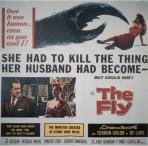
The opening line of H.P. Lovecraft's story, "The Whisperer in Darkness," tells us most of what we need to know about that Anglo-American Gothic xenophobe's approach, and all about Jacques Tourneur's: "Bear in mind closely that I did not see any actual visual horror at the end." Many years ago an astute friend observed that Steven Spielberg's Jaws shared an essential characteristic with Tod Browning's Dracula: the suggestion of horror coupled with the tension of suspense. Even as a kid, I had noticed that Lugosi didn't have fangs, but he still looked like he could--and would--bite. It is the space just around the dark corner, not in front of one's nose, that makes one hesitate to move forward. Like anyone who is attracted to horror fiction and films, I have tossed around these ideas, as well as read others, such as Poe, Lovecraft, and King, on the art of composition of the unbearable. Sooner or later, they all get around to that moment at the edge of darkness, as they stand above the dank hole, on the threshold of the old dark house, at the bottom of the silent stairs, and know they will go on, or that Something will come to them.
Jacques Tourneur and Val Lewton understood the power of the whisper in the dark. In three tidy pictures--Cat People (1942), I Walked with a Zombie (1943) and The Leopard Man (1943)--they called to us in notes whose spell on later horror films has never been completely broken. Even Hitchcock's Psycho (1960) is mostly about suggestion: the shower scene is famous for being not nearly as explicit as the eye insists. But this is not quite the best example of the Lewton/Tourneur approach. Better yet are those moments when we stand outside the Bates Motel looking up at the house, seeing silhouettes, hearing troubling arguments, waiting for Norman's mother to fly at us once more; such is the effect of terror by implication. It is a kind of horreur film noir, in which the sardonic grin of expressionism combines with the panic followed by weary submission of the great 1940s-1950s crime films--one of which Tourneur directed, Out of the Past (1947)--to produce a dreamworld in whose making we participate. In discussing the special effects of the pre-CGI world, Roger Ebert has often noted that contemporary effects simply show us the monster, but older films show us the filmmakers' imaginations at work. And I think this applies not only to Ray Harryhausen's stop-motion skeletons but also to Lewton/Tourneur's incessant fades to black just when we assumed our questions would be answered.
The 1970s saw a ferocious insistence on gore--as, I think, John Carpenter says, all that bad karma (the assassinations of the 1960s, Vietnam, Watergate) had to go somewhere--and the grindhouse crunch and splatter has never left us; still, the Lewton/Tourneur shadow still stretches across this necrotic landscape. Consider the recent trends in Asian films such as Ringu (1998), Dark Water (2002), Phone (2002), and A Tale of Two Sisters (2003). While they depend heavily on jump-cuts and shock effect, they also understand the power of intimated horror, with their images of long-haired figures hovering over sleeping forms or lurking in hallways, vague childlike shapes glimpsed through elevator windows, low sounds from the next room. And their plots are more dream-structures than storylines, fraught with uncertain fumbling toward an only partially revealed truth.
For me, nowhere in the Lewton/Tourneur films is this whisper in the dark more sustained than in The Leopard Man. I haven't seen it in a few years, but to tell the truth my fading memory of its details actually enhances the film for me. The Internet Movie Database reminds us it deals with a series of murders by an escaped leopard--or a man who assumes the shape of one (shades of Cat People). It is based on a story by Cornell Woolrich, one of the architects of noir suspense fiction; he also wrote the short story, "Rear Window." A particular sequence--or is it two incidents in the film? I cannot quite recall--stays with me. A woman walks along a deserted, tree-lined street. Something is pursuing her. She looks upward, and we wonder with her if the branches sway because of a slight wind or a stalking shape. She eventually makes it to her doorstep, only to have her pursuer catch up with her. Two images rise up in my memory: a tree branch bouncing as though a weight had suddenly been lifted from it; and, in the movie's closest thing to a shock moment, the woman's death, shot from inside her house, as her terrified family hesitates at the door, her entreaties to be let in abruptly ending, and they look down at a simple pool of blood that seeps under the door--and of course it is blood filmed in black and white, so that it takes on the color of the Lovecraftian ichor that seems always to drip from the walls of his subterranean netherworld.
The lasting impression of this technique is the terror of uncertainty. Val Lewton and Jacques Tourneur understood with H. P. Lovecraft that, as Lovecraft's narrator says in "The Statement of Randolph Carter," everything must be "told with perfect candour," and nothing can be "distorted or concealed." But in the telling a "dark cloud" comes over Carter's mind precisely because of "the nebulous nature of the horrors." Carter is trying to relate to the police what happened to his friend who descends into a particulary nasty tomb and suffers an unseen death at the hands of something with a voice that is "deep; hollow; gelatinous; remote." He remains above and can only guess at the exact nature of his friend's fatal experience. My memory of The Leopard Man's best moments is of such a descent into the dark, where a disembodied voice whispers and is gone, and leaves us wondering exactly what has happened, and how much of it was of our own making.

